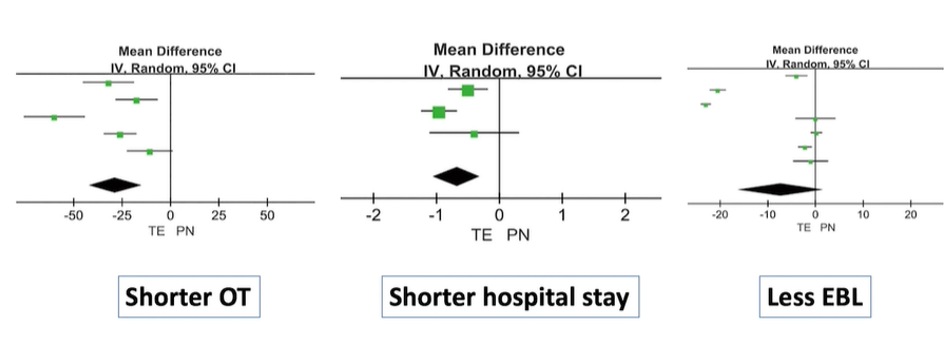He began highlighting that there are essentially two options: classical wedge resection and enucleation.

Dr. Bensalah then provided a video of an example where he performed tumor enucleation for a relatively large, lower pole T1b tumor. He emphasized that he viewed one of the main benefits to be that it is easier to control the vessels.
Dr. Bensalah then presented data from a relatively recent meta-analysis comparing tumor enucleation versus classical partial nephrectomy, including 13 studies with nearly 5000 patients. Tumor enucleation was associated with lower morbidity, manifest with shorter operative times, shorter hospitalizations, lower blood loss, and lower rates of complications. Further, while not statistically significant, enucleation may better preserve renal function.

Notably, this systematic review found no statistically significant evidence of increased rates of positive surgical margin or recurrence (though there was a potential signal for late recurrences after 2 years).
Given these data, Dr. Bensalah concluded that we should promote tumor enucleation. He then described the concept of enucleoresection. He emphasized that, to him, it was not entirely clear how this approach differs from the alternative approaches. He emphasized that, in this approach, the surgeon may be closer or farther from the tumor at different portions of the resection, based on anatomical guidance. He described a SIB score which may be helpful to guide decision making between enucleation and resection, though he felt that this was not particularly useful in clinical practice.
In concluding, Dr. Bensalah emphasized that robotic-assisted partial nephrectomy is associated with a relatively long learning curve, requiring nearly 200 cases for improvements in warm ischemia time and with ongoing improvements in complication rates even after 300 cases. In addition to individual surgeon volumes, hospital volumes are important.
Thus, while tumor enucleation may be less morbid, there are many biases in the data and improved outcomes may be more related to surgeon experience.
Presented by: Charles Karim Bensalah, MD, Ph.D., Centre Hospitalier Universitaire de Rennes | CHU Rennes · Service d'urologie
Written by: Christopher J.D. Wallis, MD, Ph.D., FRCSC, Instructor in Urology, Vanderbilt University Medical Center, Nashville, Tennessee @WallisCJD on Twitter during the 18th Meeting of the EAU Section of Oncological Urology (ESOU21), January 29-31, 2021


